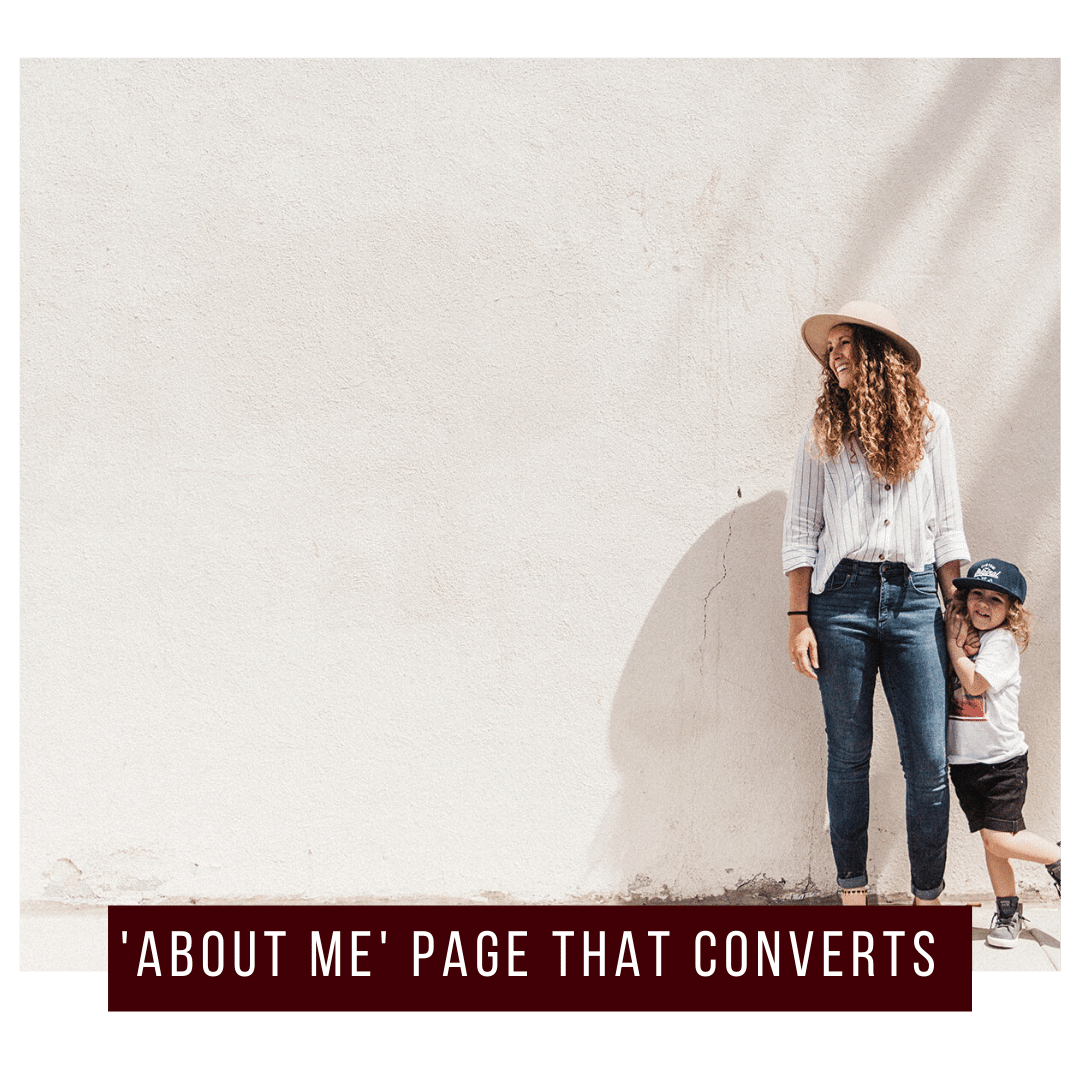3 Must-Have Categories for Organizing Story Content in Business
When I founded my business way back in 2016, I struggled for a really long time to figure out who I was, the impact that I wanted to make, how I wanted to support my clients and ultimately created a brand that wasn't a true representation of me and my personality.
After a lot of discovery work and a lot of ups and downs, having a website, scraping the website, trying to sign clients, not being able to sign clients, literally all the things, I got back to my story.
I started doing story work around who I was and the impact that I wanted to carry out into the world. And that is what has led to the brand that you see today.
Almost instantly from doing that work and making some small changes with my messaging and my copy and incorporating more storytelling into my actual content, I started to sign clients and have sustainably grown my business consistently over the past four, almost five years.
If you were to say there was a secret weapon to being a business owner, I truly believe that it is storytelling.
Especially if you have a personal brand because this is how we build connections. And we build trust, which as we all know is why people buy, invest and continue coming back time after time, year after year, investing over and over in courses and programs and referring their friends and family.
SHARING STORIES IN BUSINESS
Many people create their brand story and think they're done. They don't think about storytelling anymore in their content and their videos and their blogs and their marketing.
And if you're paying attention, I already shared a story with you!
Storytelling in marketing is really powerful. And today, I want to share with you three categories that you can group your stories into and then recycle through as you share your content and your marketing in your business.
Each of these three categories, as you will notice, will help not only in the client attraction process but also in moving your potential clients through the buying process.
Now storytelling really is about the effect that it has on your ideal customers' brain. The neural coupling, the dopamine, the connection that it creates.
As we know, this connection and ultimately trust is why people choose to invest.
One of my favorite quotes from Zig Ziglar says, "If they like you, they'll listen. If they trust you, they'll do business with you," they'll ultimately buy from you. That really is the key and storytelling is one of the fastest ways to build trust with your community.
However, people tend to think that storytelling has to be this long-drawn-out process and that if you're going to share a story, then the whole entire social media post or the whole entire email has to be one great story.
But that's not the case. One of the things that I teach my clients is called micro-stories. And I gave you an example of a micro-story at the beginning of this blog where I shared how I started my business just five years ago. And for the first eight months, I struggled to figure out who I was and what I wanted to offer.
I painted that picture for you, ultimately sharing with you that once I sat down and got back in touch with my story, I scraped my entire website, redid it, changed my messaging, started showing up, incorporating more story and then signed my very first client and continued to sign clients to create a multiple six-figure a year business over the past five years.
That was just a tiny bit of story woven into a larger piece of content.
So when we're thinking about storytelling and when we're starting to dive into these three categories of storytelling, I want you to remember that storytelling doesn’t have to be this long-drawn-out process. It can be presented in very, very small micro pieces that move the relationship along and build that know, like, trust factor.
BRAND AWARENESS STORIES
The first category is really focused on the brand awareness stage, attracting new people to your brand, which is key when it comes to marketing.
In order to create a sustainable and profitable business, you’ve got to make sure new people are finding you regularly. And these brand awareness stories are a great way to not only bring in your ideal customer but then start building that trust right away, almost right out of the gate.
This type of story is really powerful and tends to gravitate a little bit more towards educational content.
But it doesn't mean that we can't work storytelling into it. As I mentioned before, a story can be a single sentence and this post is actually a great example of a brand awareness story.
I'm teaching you something. You probably clicked on this blog because you wanted to read about storytelling and business, and specifically, the three must-have categories.
But of course, through this process, I've shared a story, I've connected with you and hopefully, you'll stick around for more.
Think of cold audiences, people who aren't already aware of your brand, that might be seeing you for the first time. They're most likely searching for tips and tricks and tools, and you can support them in creating content around that. And then of course incorporating your authentic story into the process.
One example could be you sharing your top five resources and why. A great way to incorporate storytelling here is to not only share those resources that are going to benefit them but also share how you came to find those resources. And a need that might've been happening in your life or your business. A great opportunity for storytelling, and then ultimately giving them those resources as a key takeaway.
Another one that you could share is three myths about something that happens in your industry. I love this one, it's one of my favorite categories to talk about. I like to talk about the three myths that happened in branding and marketing and repurposing and content creation.
Those are categories that I specialize in and I like to share three things that I truly believe are misconceptions or myths or beliefs that people have that aren't in alignment with my brand and my values.
So this is a great opportunity to not only educate your audience because everyone wants to know what myths or mistakes they might be making in their business or in their life. Then you can interweave a story into that as well.
So as you're sharing these three mistakes or myths, you could share that you've made them maybe, or when you first heard them or how avoiding making this mistake ultimately helped you in your business. Again, another opportunity for storytelling.
Finally, in this category, you could also share three lessons from your experience. This one's pretty much a no brainer, right? If you have three lessons, it's a great opportunity to share the story aspect of that.
What happened and how you learned those lessons. People are always looking for other people's experiences and lessons learned that help them either avoid mistakes or really accelerate their growth or their progress based on what other people have experienced.
Those are three examples that take more of an educational approach, but again are perfect for sharing a story.
BRAND AUTHORITY STORIES
Brand authority is kind of the next phase in the process of client onboarding. You think about a new client coming in, not knowing you, that's the whole brand awareness stage.
Then we're really focused on positioning you as the expert so that they know that they should invest in whatever it is that you're selling or you're offering. This is where brand authority comes into play.
One of the key pieces of storytelling is making sure that you are positioning yourself as the authority or as the expert.
Otherwise, people won't see why they should invest in you or how you're ultimately going to help guide them to their desire, to their pleasure point, to the finish line, whatever that might be for your ideal customer.
So these stories are really important and can focus more on solving a specific problem as well as what I like to call an industry disrupt. As we mentioned before about those myths in the brand awareness stage, this is another opportunity to go deeper and really share why you do what you do in your business. The framework that you follow, how you support your clients and why you're different from somebody else.
So I'll give you a couple of examples of these stories as well.
Number one is to expose a lie or a truth about something in your industry. Maybe you're catching on here. I really like these stories because there are a lot of people talking about the same thing in every industry. It doesn't matter what you're focused on.
So your consumer has a lot of choices but they're going to gravitate to the people that resonate most with them, share the same values as them, as we'll talk about in the next category. One of the ways to really kind of separate yourself from others is offering this industry disrupt.
If there's something that's happening in your industry that you believe is misleading people, or isn't in alignment with your values or your core framework, you can share that. It’s also a great opportunity to share a story.
One of the things that I love to talk about is how content creation is actually a branding problem. If you struggle with content creation, the odds of you missing key pieces of your brand is incredibly high. Not knowing who you are, not knowing who you want to attract, not understanding your offer, not understanding the emotional connection. Those are all part of the branding process.
So I love to share this industry disrupt because we often think that content creation is like a copywriting issue or an engagement issue when really it could be a branding issue. Again, it's an opportunity to share more about why I have that belief and why I believe that this is something that is misleading to my ideal customer, a great opportunity for story.
Another opportunity here is to share your brand story and your founder’s story. Everybody writes their brand story and then puts it on their About Me page, and then they forget about it.
But this is an opportunity for you to work that into your content, to share little pieces of it, little phases of it, to highlight very specific parts of your brand story, to highlight your mission.
As a way to again, share with your ideal customer that you know what you're talking about and you've created this business to help solve this problem that they are ultimately experiencing. That's a great way to position yourself as the guide and as the authority in their journey.
Finally, another way to build that brand authority is by sharing client stories and testimonials.
The stories that we share in business are not just our stories. They are also the stories of our clients and our community members. And by sharing these client stories, you clearly are showing your expertise and your authority and your knowledge on the area in which you are supporting your clients.
So this is a great way to not only share that but also again, incorporate storytelling.
CREATE BRAND AFFINITY
Brand affinity is the shared values between a brand and a consumer. This is that deep, deep stuff. This is that deep trust connection that many brands miss out on because they aren't sharing these key stories.
I don't want that to be the case for you.
This is the area where client retention lives and radiates. Because when you have brand affinity, you keep coming back for more. You keep referring your friends and your family and the people who trust you. You buy courses and programs and move up to one on one coaching and so on and so on, even though the investments get higher, because of the strong brand affinity.
This is a beautiful opportunity for you to start building that deeper connection with your audience. So some of the things that I love to share in this category are your brand values.
Brand values are so important and in 2021 they are going to be more important than ever. People have said that they will buy based on a brand's values and they will also boycott or not buy because of those same values if they aren't in alignment with theirs.
So one of the best things that you can do is openly share your brand values with your audience.
Now, this doesn't mean I want you to just create a post and list all your brand values, that's incredibly boring.
You could share a story about each of those values. Why are those valuable to you? Why are they values for your brand? Is there something that happened in your life? Share those through the art of storytelling.
Another thing that you can do is share your mission. We did already talk about this in the brand authority section, but this is also something that can live in this area as well. You can not only build brand authority but brand affinity with your brand mission.
Sharing the real purpose behind why you started your business, how you want to make a difference in the world, the impact that you want to make, and who you want to serve. That is a great thing to communicate to your audience, get them on board with what is happening, and build that brand affinity.
Finally, you can also share some life lessons. In the lesson section that I shared before, when we were talking more about brand awareness, those might be lessons within your industry. And those are absolutely amazing as you can guess, but they're more educational.
What I'm talking about here are life lessons. This section of brand affinity is a great place to share those more personal stories and those mistakes that you've made just in your life and what that's taught you, how you've transformed or transitioned through your life. The focus here is transformation or inspiration.
One of the things I love sharing are these life lessons, things that you've learned just in your everyday life. Maybe they're not directly connected to what you offer, but they are connected to your brand because they're connected to your mission, to your values and who you are as a person.
And again, it's just another opportunity to form that deeper level of connection with your audience.
CONCLUSION
So there you have it, there are three categories that you can start to put your brand stories into. I love creating these categories with my clients so that they always can just go back and cycle through and say, "Hey, I haven't shared a story on brand affinity in a while, let me go grab something from that category."
One of the coolest places to organize all of this could be a spreadsheet, or if you're visual like me, you can use Trello to actually create these columns with brand affinity at the top, brand authority, brand awareness. And as you think of stories, you can add them in there and then schedule them in your content for the next 30, 60, or 90 days.
Remember every story, even your own, needs to connect with your audience. So Ideal Customer work is so important and is one of the core pieces taught in all of my programs.
It’s important to think outside of the box when it comes to storytelling in business. If you’re a business owner, don't forget to get signed up for the Tell Better Stories Workshop that's happening on March 3rd.
Tickets are now on sale and you can go to brandmerry.com/stories to grab yours.
This class only happens once, maybe twice a year. So don't miss it.
You definitely want to jump into this class if you want to learn more about how to craft a better brand story, how to tell stories on social media, how to actually use storytelling to sell. And I'm going to be sharing more of these categories with you to make your content creation that much easier.
Get your ticket at brandmerry.com/stories.
Watch the full video below!
P.S. Have you tuned in to The Beautiful Climb podcast? I release new episodes every other Friday on topics around productivity, motherhood, habits, goals and going after the life of your dreams! Check out past episodes and be sure to subscribe at thebeautifulclimb.com
- FREE GIFTS YOU'LL LOVE -
DISCOVER YOUR BRAND STORY IN UNDER 5 MINUTES
LEARN HOW TO WRITE AN ‘ABOUT ME’ PAGE THAT CONVERTS
MAP OUT 30 DAYS OF CONTENT IN UNDER AN HOUR
- READ THE LATEST POSTS -
MEET MICHELLE
Hey there, I'm Michelle Knight and I an online branding and marketing consultant for female entrepreneurs.
I believe in the power of storytelling and using that superpower to brand and market yourself online...oh and to set yourself free.
I'm obsessed with living a life of freedom, so much so, that my family and I now travel full-time while running my business from the road.
This blog serves as a home base for all things branding, marketing, content creation and more.











